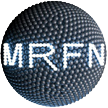A focused electron beam (3-20 keV) is scanned across the sample surface. Atoms near the surface are ionized, and a fraction of the ionized atoms relax via the Auger process. The spectrometer ultimately measures the kinetic energy distribution of a portion of the Auger electrons that are emitted from the sample. The technique is inherently surface sensitive because the majority of the measured Auger electrons originate in the outer 5-10 nm of the sample surface.


